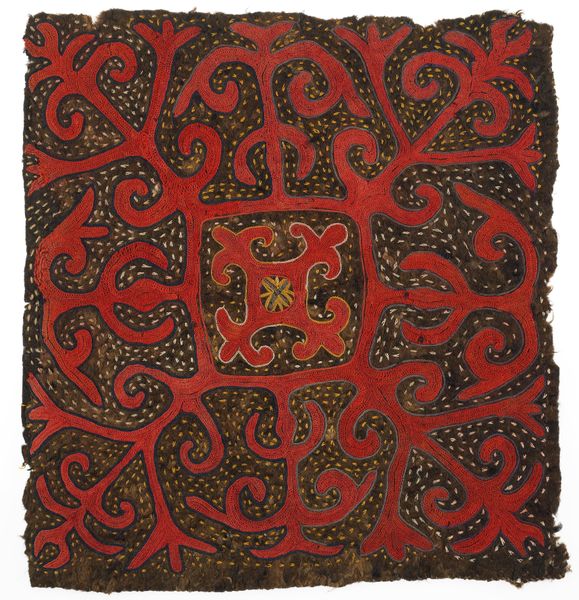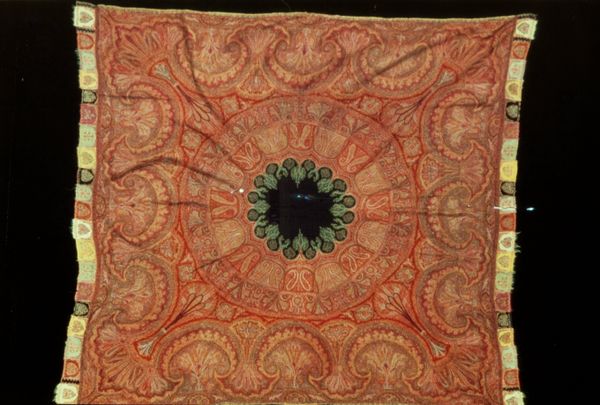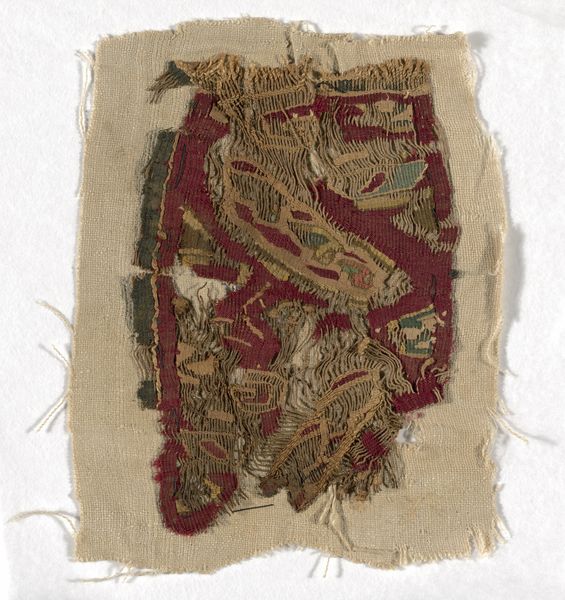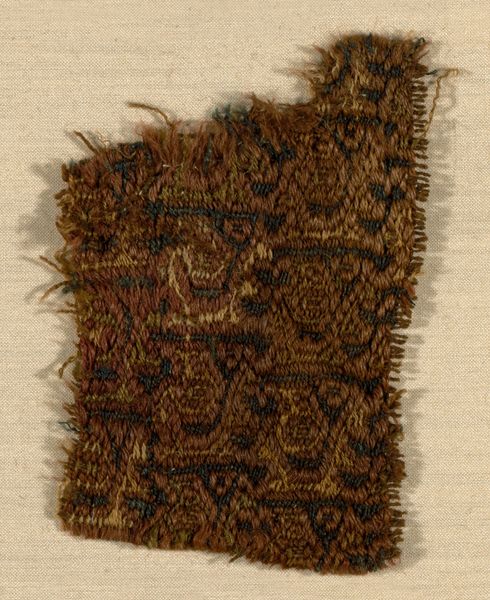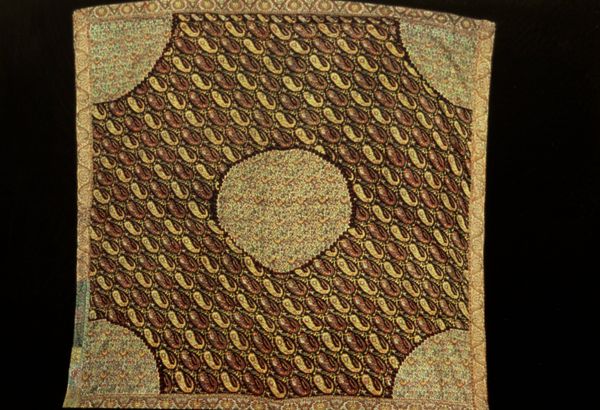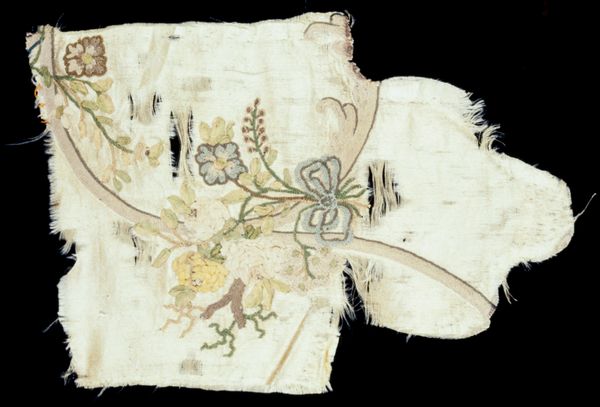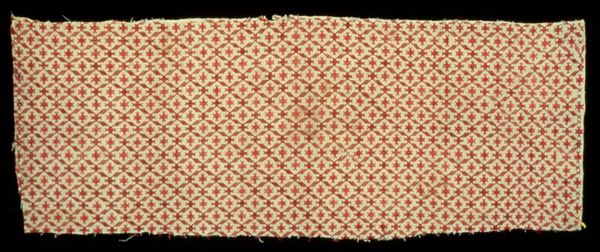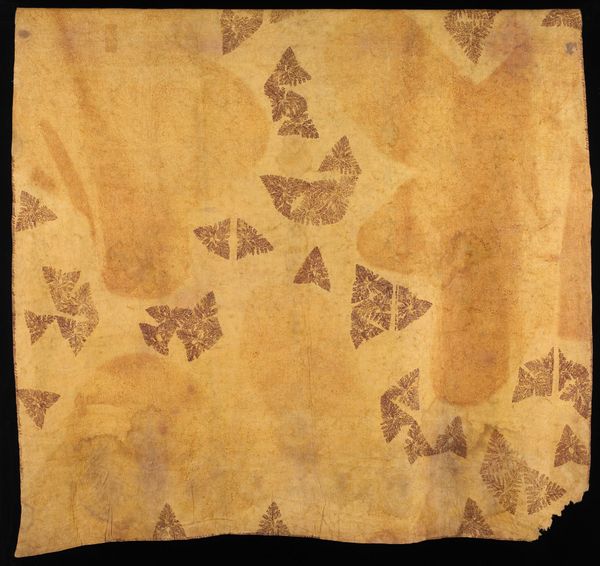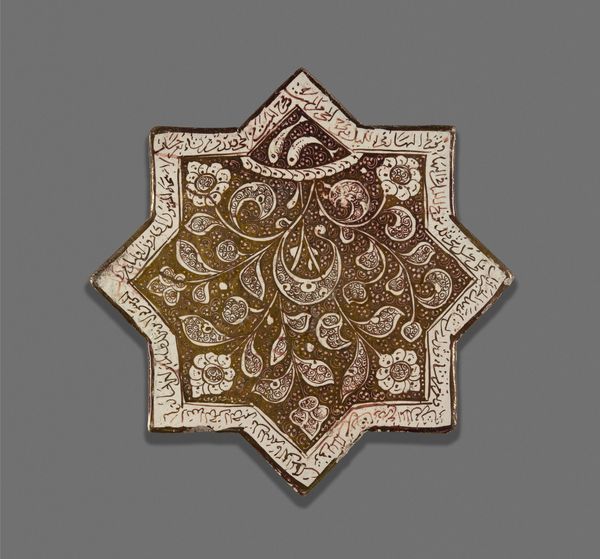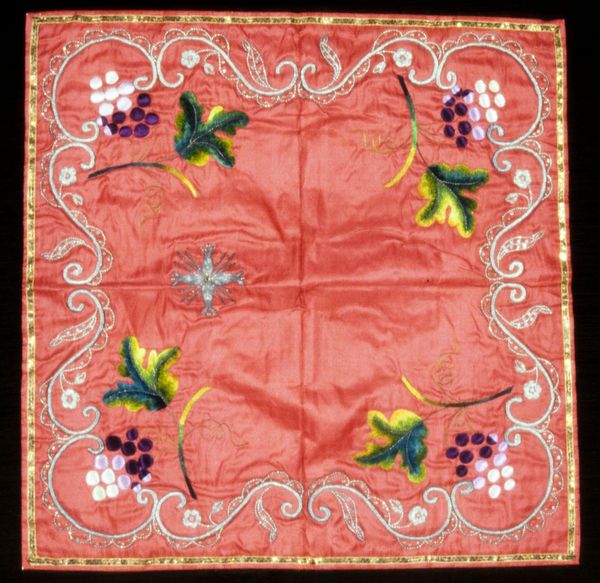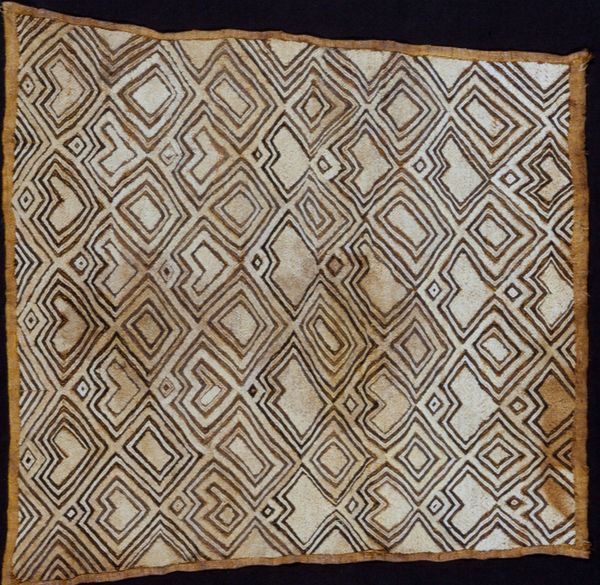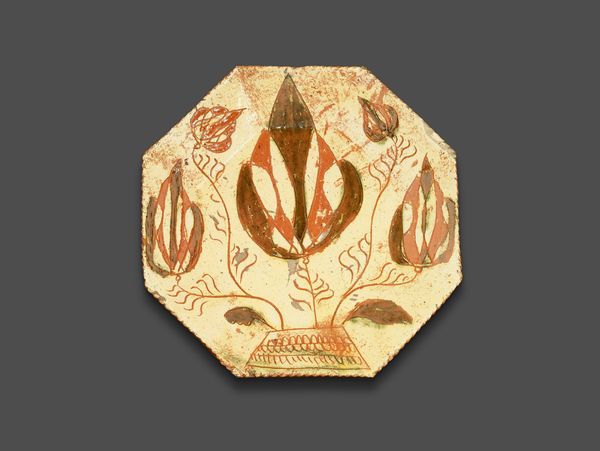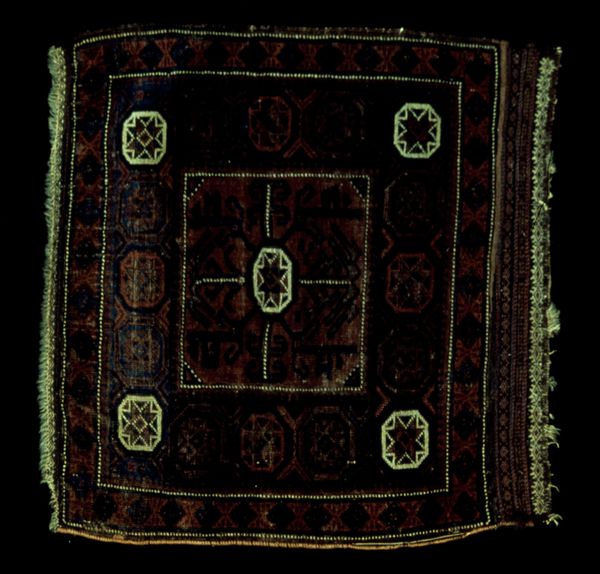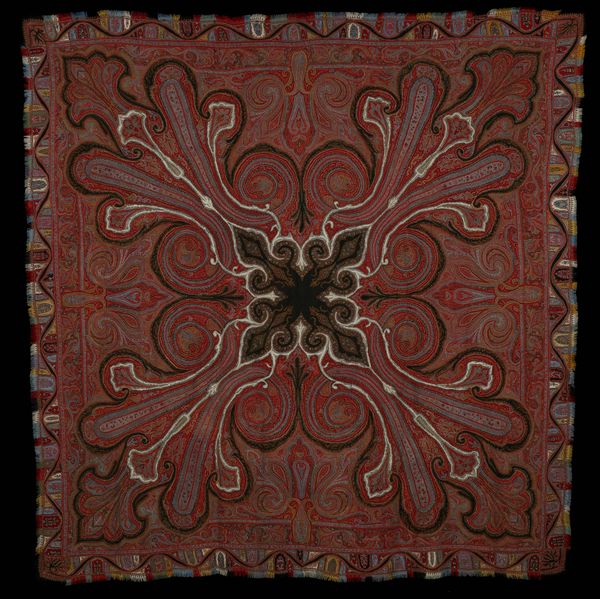
fibre-art, textile
#
tribal design
#
natural stone pattern
#
fibre-art
#
naturalistic pattern
#
textile
#
hand-embroidered
#
abstract pattern
#
organic pattern
#
intricate pattern
#
pattern repetition
#
layered pattern
#
motif
Dimensions: 14 x 12 1/2 in. (35.56 x 31.8 cm)
Copyright: Public Domain
Curator: Before us is a "Corner fragment of a shawl," a textile work believed to be from the 19th century, held in the collection of the Minneapolis Institute of Art. Editor: Its weathered condition only amplifies its delicate and intricate ornamentation; it evokes feelings of nostalgia and hints at a rich past. Curator: Indeed, the use of organic pattern and layered motif arrangements create visual interest that's complex, even without knowledge of its prior wholeness. We see primarily wool, worked in a way that displays an expert handling of fiber and composition. Editor: Let's remember who likely crafted and wore this piece. Shawls were deeply ingrained in many women’s identities and signified respectability, region, and even socioeconomic status, a symbolic act often deployed against the rise of industrial uniformity. The garment may speak to cultural connections, ancestral heritage, or resistance against dominant forces. Curator: And what's particularly striking about the hand-embroidered detail here is how it utilizes the organic motifs, which suggests naturalistic environments transformed through human artisanship and skilled compositional approaches. Editor: Absolutely. Looking closer at that organic ornamentation, consider the historical context, perhaps of women gathering together, exchanging cultural memory and experience, whilst collaboratively producing textiles—an unspoken means of recording local histories otherwise excluded from mainstream discourse. Curator: While your reading holds validity from that perspective, I find my attention drawn to the structure of repeated forms that build up the abstract pattern, and how the textile art movement embraces and elevates those "feminine" coded mediums as intrinsically beautiful and valid on their own formal merit. Editor: It also urges us to recognize artistry across socioeconomic divides. It challenges the artificial separation between the fine arts, as well as artisanal handicraft and, consequently, knowledge created across society as well as how class and gender influence those categories. Curator: A fruitful discussion of just a fragment, wouldn't you agree? Editor: Yes, it leaves me contemplating the many "incomplete stories" around such artworks and the potential that comes from piecing together various points of view and interpretations.
Comments
No comments
Be the first to comment and join the conversation on the ultimate creative platform.
